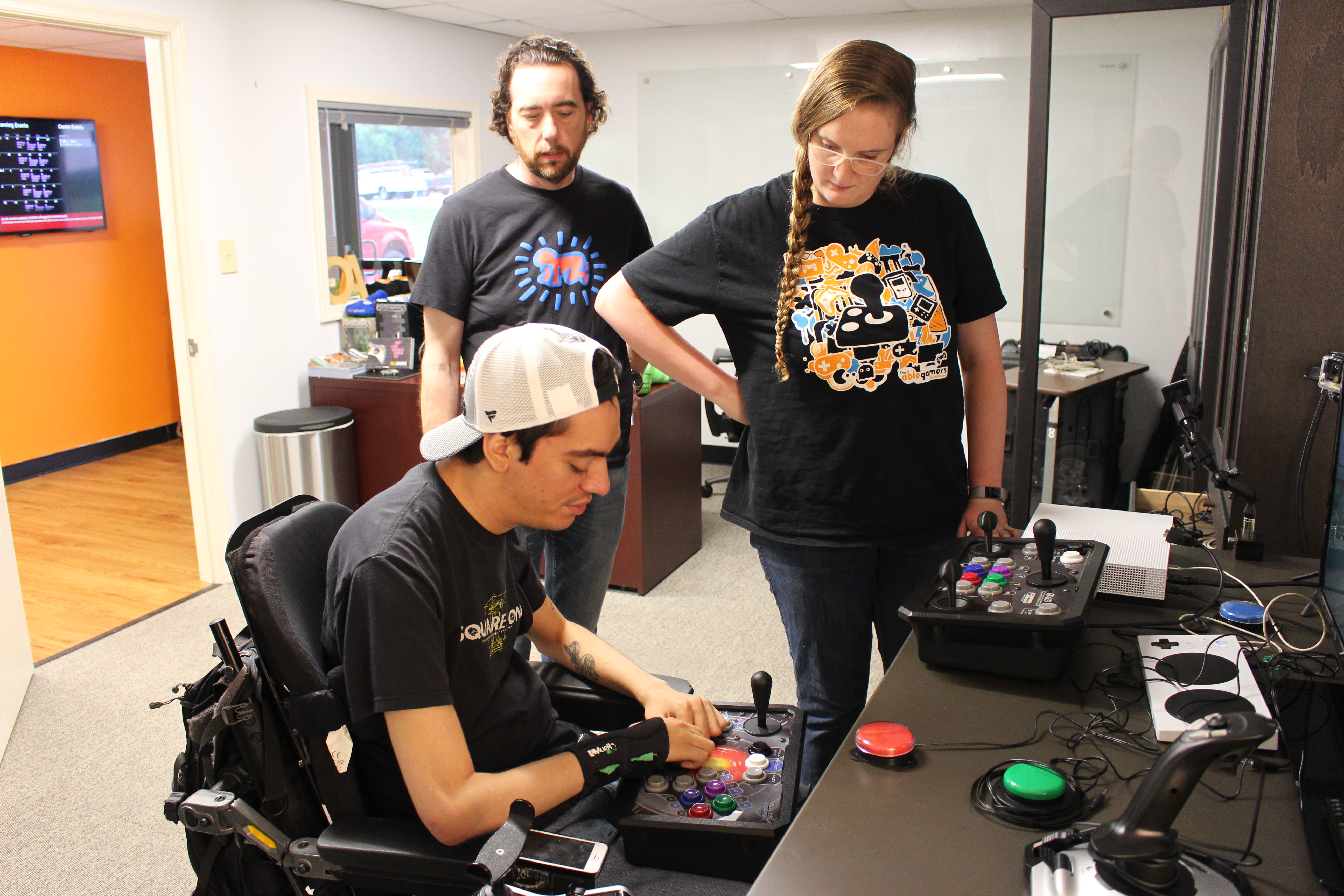Intro to Gaming with a Progressive Disease
We know that you’re here because you want to play video games, and we love for players to discover how to play on their own, but this isn’t always easy. Gaming With Muscular Dystrophy, Lou Gehrig’s Disease (ALS), Spinal Muscular Atrophy (SMA) or even severe Multiple Sclerosis (MS) can be complicated, and everyone is unique. These things all translate into gaming with a Progressive Disease. Luckily, there are solutions, tips, and various assistive technology that we have discovered during our years of helping people just like you. Our goal here is to take you on a quest of self-exploration to better inform yourself. The reward from this quest is our knowledge and among that, hopefully, the answers that you are seeking!
Challenges & Considerations of Gaming with a Progressive Disease

The main challenge when gaming with a Progressive Disease is having to adapt your setup based on ever-changing abilities. When gaming with a progressive disease, you may have to change your setup down the road in order to accommodate declining abilities. This can be frustrating, time consuming, and cost a lot of money.
Let’s explore some other challenges and considerations of gaming with a progressive disease.
Remappable Controls
Sometimes, accessibility is at the game level. The ability to remap controls is vital to adapting different setups and placing inputs where they are comfortable and practical to use. Look for these settings when deciding what games to play.
Environment
Using your environment to your advantage can be a game changer, literally. A strategically placed pillow or two can make all the difference for a comfortable setup. Controller grips can help a lot too! Try adapting your environment to your needs, whatever that may be.
Style of Play
One of the biggest challenges is simply adjusting to a new style of play. This challenge is specifically aimed at players who have previous gaming experience with a standard controller.
Gaming Solutions
Adaptive Hub + Switches: The first solution combines an adaptive hub (Xbox Adaptive Controller, Hori Flex, etc.) with assistive switches. These switches can be used to tailor a setup to your needs as a player. An extensive list of switches and their functions can be found here.
These switches can be arranged in any way that works for you. The goal with this setup is to use switches that are comfortable for you to use while gaming. Keep in mind that these setups are not ideal for extremely complex or fast-paced games.
Example: You could use small light touch switches close together paired with either the standard controller thumbsticks or external thumbsticks.
Standalone Controller: The second solution is to use a standalone controller. There are many options for these types of controllers, but we have listed the ones that we recommend the most to our players below.
8Bit Do Lite SE

The 8Bit Do Lite SE was specifically designed for players with limited mobility. It is great for players with fine movements and has a gripped back, so it doesn’t slide while playing. A great and affordable option!
Evil Controllers Light Weight Controller

The Evil Controllers Light Weight Controller is actually customizable. You can have the controller made to your preferences and capabilities.
AbleGamers Recommends
Patience and Practice
Part of the process will be relearning how to play using a completely different setup, which will require a lot of time, energy, and commitment.
Designated Space / Setup
We recommend keeping your equipment in a designated space for your gaming setup. This eliminates the need to set up the gaming station every time and will allow you to play whenever you’re ready. We also recommend mounting your equipment, so once you get it right, it doesn’t move! The most popular material for mounting switches is heavy-duty velcro. Velcro allows you to keep a switch in its preferred position, so it doesn’t move while gaming. Below is an example of a player’s setup in our community!
